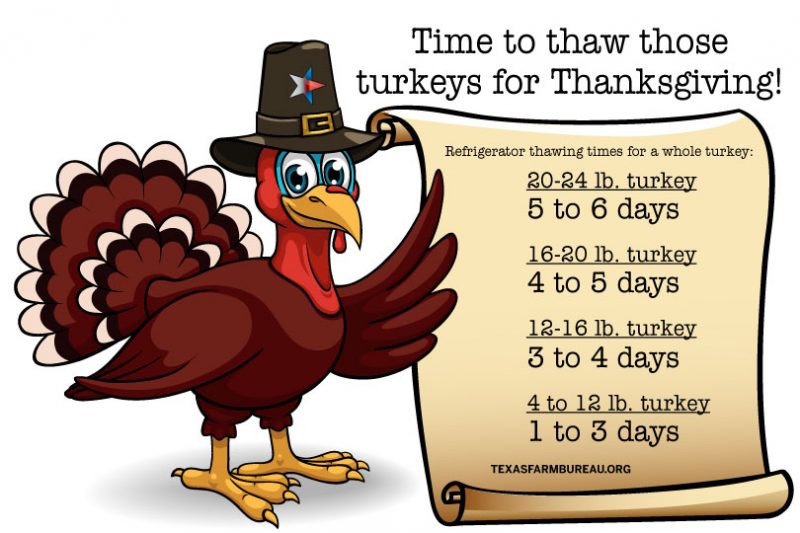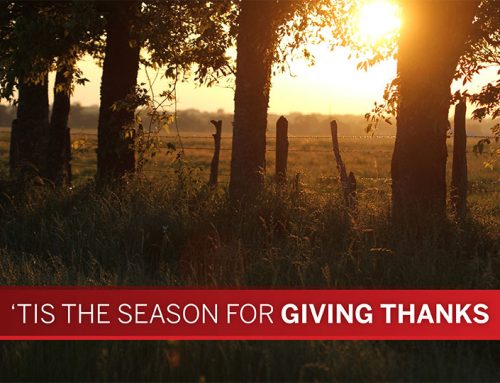By Jennifer Dorsett
Thanksgiving is almost here! It’s one of my favorite holidays, because it combines tasty food and spending time with my family and friends.
Everyone brings a delicious dish or two, and we all stuff ourselves silly. We trade old family stories, catch up on the latest news, bounce new babies and admire shiny new engagement rings. Then we cap it all off with an old family tradition, the white elephant gift exchange.
One thing we don’t exchange? Foodborne illness.
We try to follow best practices in the kitchen to keep our meals and families healthy and safe. The turkey—in particular—can pose a food safety threat if not handled properly.
To keep your own family safe and healthy this holiday, here are some food handling tips from the U.S. Department of Agriculture (USDA) Food Safety and Inspection Service.
Turkeys must be kept at a safe temperature during thawing. As soon as meat begins to thaw, any bacteria present can begin to grow again, causing foodborne illness.
Frozen meat or poultry left on a countertop for more than two hours enters the “danger zone.” Even if the center still feels frozen solid, outer surfaces can reach between 40 and 140° F, when foodborne bacteria rapidly multiply.
There are only three safe ways to thaw food: in the refrigerator, in cold water and in the microwave.
Refrigerator
It takes a little planning ahead to thaw a turkey in the fridge. Allow about 24 hours per 4 to 5 pounds of weight. The refrigerator’s temperature should be set at 40° or below to limit bacterial growth. And always be sure to put the turkey in a leak-proof container to avoid cross-contamination with other foods.
Refrigerator thawing times for a whole turkey by weight:
- 4 to 12 lbs – 1 to 3 days
- 12 to 16 lbs – 3 to 4 days
- 16 to 20 lbs – 4 to 5 days
- 20 to 24 lbs – 5 to 6 days
A thawed turkey can remain in the refrigerator for one to two days before cooking.
Cold water
Again, a little planning ahead is necessary, but not quite as much time is needed. However, thawing a turkey in cold water is more labor-intensive. USDA recommends changing the water every 30 minutes until the turkey is thawed. Don’t forget to put the turkey in a leak-proof plastic bag to prevent the bird from absorbing water and becoming rubbery and watery when cooked.
Cold water thawing times by weight:
- 4 to 12 lbs – 2 to 6 hours
- 12 to 16 lbs – 6 to 8 hours
- 16 to 20 lbs – 8 to 10 hours
- 20 to 24 lbs – 10 to 12 hours
USDA advises to cook a turkey thawed in this manner immediately.
Microwave thawing
This method is somewhat tricky because microwaves vary in wattage and by manufacturer. Follow the microwave manufacturer’s instructions. You can usually find a defrosting chart somewhere on the inside of the microwave when the door is open. Look on the side of the door, too.
USDA cautions that turkeys thawed in this manner should be cooked immediately, due to changes in temperature in some parts of the turkey (like the surface). They may rise to the “danger zone,” and holding partially-cooked food is not recommended. Bacteria present would not have been destroyed and can easily grow to unsafe levels before the bird goes into the oven.
However you decide to thaw your bird and however you celebrate Thanksgiving, we here at Texas Table Top wish your family the very best. Be healthy, happy and safe this holiday season.











Leave A Comment